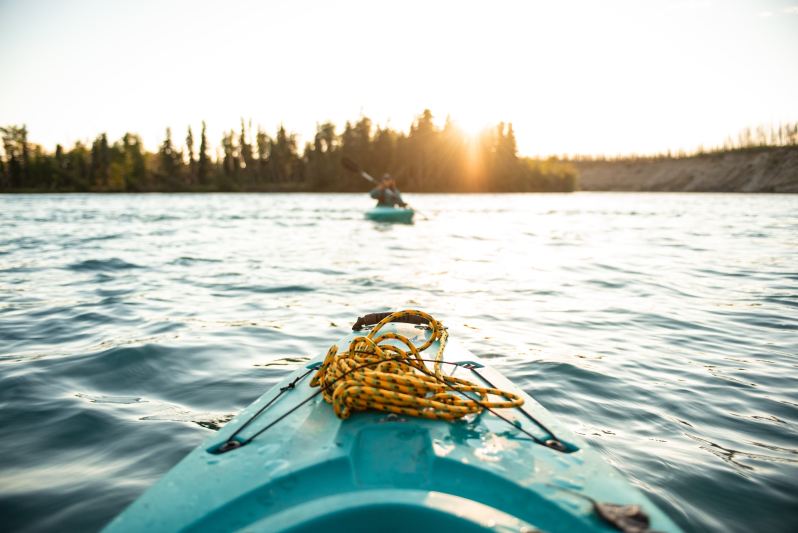
Kayaking is about to get an electrifying new twist that will make it more accessible than ever—electric pedal assist. Taking inspiration from the electric pedal assist technology on bicycles, kayaking companies like Old Town are now designing models that take advantage of your lower body strength as opposed to your back and arms strength, and multiplying your efforts through the power of electricity. While pedal boats have been around for a while, kayaks are starting to get a makeover with electric pedal motors that make the sport more accessible.
Pedaling with your feet is not only more efficient than the age-old paddle-and-row routine, but it also liberates your hands for more vital endeavors, like sipping that lemonade. Steering is not a problem, either. With a handy rudder, you can turn the kayak any way you like.
While it might not be quite as monumental as wheels on suitcases, electric pedal assist for kayaks is absolutely something worth considering. Here’s why:
- Extended range: Electric pedal assist systems provide additional power to your paddle strokes, allowing you to cover longer distances with less effort. This is particularly beneficial for kayakers who want to go on extended adventures.
- Reduced physical strain: Electric assistance reduces the physical effort required for paddling, making kayaking accessible to a wider range of individuals, including those who may have physical limitations, are new to kayaking, or simply want a more leisurely experience.
- Speed and efficiency: Electric pedal assist can help you achieve higher speeds with less effort, making it easier to keep up with faster currents or your ripped health nut buddies.
- Enjoyable recreation: Electric pedal assist kayaks provide a more enjoyable and relaxing paddling experience. You can focus on soaking in the scenery, wildlife, or simply enjoy the serenity of the water without the constant exertion of manual paddling. And if you’re fishing, you can focus solely on your catch.
- Safety: Electric pedal assist can assist in navigating challenging conditions, such as strong winds, tides, or currents.
- Customizable experience: Many electric pedal assist systems offer adjustable power levels, allowing you to fine-tune the amount of assistance you receive. This customization allows you to tailor your kayaking experience to your preferences and needs.
- Accessibility: Electric pedal-assist kayaks can make kayaking more accessible to people of different fitness levels and abilities. This inclusivity can encourage more people to enjoy the benefits of spending time on the water.
For those who savor the serene side of kayaking, pedal-assist kayaks promise a new level of exploration. You can meander through the waterways with ease, covering more ground without feeling like you’ve embarked on an impromptu triathlon. Think of it like an aquatic e-bike, minus the traffic jams and road rage.



